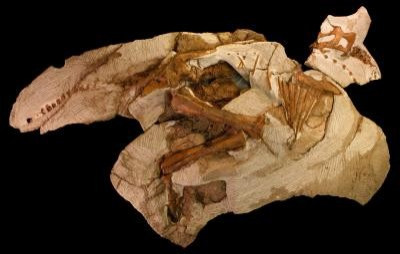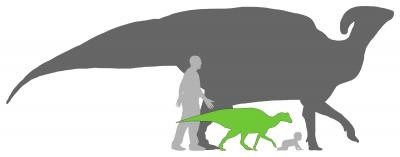Utah Teenager Kevin Terris Discovers Most Complete Skeleton of Baby Duck-Billed Dinosaur
High school student finds baby Parasaurolophus in Grand Staircase-Escalante National Monument

A teenager has discovered the skeleton of a duck-billed baby dinosaur that lived 75 million years ago in the Grand Staircase-Escalante National Monument in southern Utah.
High school student Kevin Terris found the baby Parasaurolophus in 2009 by chance despite the remains being missed by two palaeontologists who had walked just several feet from the fossil just days earlier.
Four years on, the dinosaur has now been described in detail in the scientific journal PeerJ.
Named Joe, the specimen is the most complete skeleton yet known from this species of dinosaur. It was a herbivorous tube-crested dinosaur that would have grown to 25ft long had it survived to adulthood.
The species lived throughout western North America and it was notable for its long and hollow bony tube on top of its skull, which scientists believe was used to make a trumpet sound to communicate with.

Speaking about the find, Terris said: "At first I was interested in seeing what the initial piece of bone sticking out of the rock was. When we exposed the skull, I was ecstatic."
While a number of adult Parasaurolophus skeletons have been discovered in the past, little is known about their early years. Researchers found that the baby dinosaur had a low bump on its head that would have later morphed into the curved tube of adults.
Andrew Farke, of the Raymond M Alf Museum of Paleontology, which announced the find, said staff were surprised to find how much the head gear had formed. "Related dinosaurs didn't sprout their ornamentation until they were at least half grown. Parasaurolophus had to get an early start in order to form its unique headgear," he said.

Scans of the skeleton allowed scientists to reconstruct the dinosaur's vocal abilities. Farke said: "If adult Parasaurolophus had 'woofers,' the babies had 'tweeters'. The short and small crest of baby 'Joe' shows that it may have had a much higher pitch to its call than did adults.
"Along with the visual differences, this might have helped animals living in the same area to figure out who was the big boss."
A bone sample showed it was very young when it died: "Dinosaurs have yearly growth rings in their bone tissue, like trees. But we didn't see even one ring. That means it grew to a quarter of adult size in less than a year," said study co-author Sarah Werning of Stony Brook University.
© Copyright IBTimes 2025. All rights reserved.






















